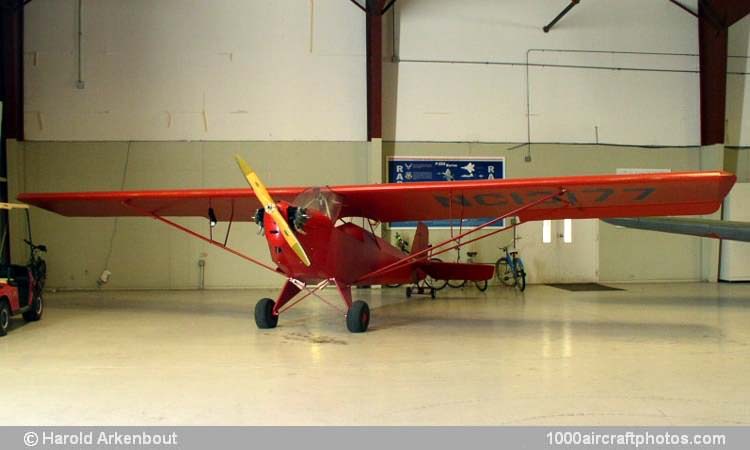12/31/2009. In the middle of 1930, Taylor Brothers Aircraft Corporation went into voluntary liquidation and W.T. Piper purchased the assets of the business and from these assets formed the Taylor Aircraft Company, with CG. Taylor as Chief Engineer. Following this reorganization, it was decided to produce a two-seat tandem low powered aircraft. This emerged in September 1930 as the Taylor E-2, c/n 11 registration NC10547. Its first flight was a five minute hop on September 12, 1930 with Mr. Kirkendall at the controls. It was a high-wing design with fabric covered tubular steel fuselage, fabric covered wooden wings and open cockpit.
The engine fitted was a 20 hp Brownbach Tiger Kitten which was provided by the Light Manufacturing and Foundry Company of Pottstown, Pennsylvania. This engine was much too low-powered, but it was this engine that engendered the name for the aircraft, because Tiger Kitten equals Cub, and the name stuck. Shortly afterwards, during October 1930, the Brownbach was removed and replaced by a 40 hp Salmson D-9 radial engine. This engine was deemed suitable in power output, but it was considered to be too expensive and anyway it was built to metric sizes. For a time the project was shelved, whilst an alternative power plant was sought.
Early in 1931 a new company, Continental Motors offered their 37 hp A-40 engine. This was fitted to a new airframe, c/n 12 registration NC10594, and was built in April 1931. This combination won an TC on July 11, 1931 and production of the Taylor E-2 Cub got under way with this Continental A-40-2 engine, commencing with c/n 13 registration NC10784. The first airplane exported was an E-2 Cub, c/n 14, which was completed on June 18, 1931. This was exported to Canada in August 1931 under export number E424 and was registered CF-ARA. In 1932 an enclosed cockpit became standard.
The Continental engine proved not to be entirely satisfactory, the search for suitable alternatives resulted in three further versions of the basic design, the F-2 Cub (40 hp Aeromarine AR3-40) in December 1933, and the sole the G-2 Cub (35-40 hp Taylor) in January 1935, that was converted into the sole H-2 Cub (35 hp Szekely SR-3-35) in April 1935. In the meantime Continental was able to cure the problem with their A-40 engine, resulting in the 37 hp A-40-3. This then became the engine used in production E-2 Cubs and the final E-2 was c/n 363 registration NC15931 built in February 1936.
The E-2 Cub formed the basis for some 695 examples of the J-2 built at its Bradford, Pennsylvania plant before a fire forced relocation to Lock Haven, Pennsylvania - and a change of the Taylor name to Piper Aircraft Corporation. However, the pictured aircraft, being built in 1933 (four years before the name change) is presently registered as a Piper aircraft.
